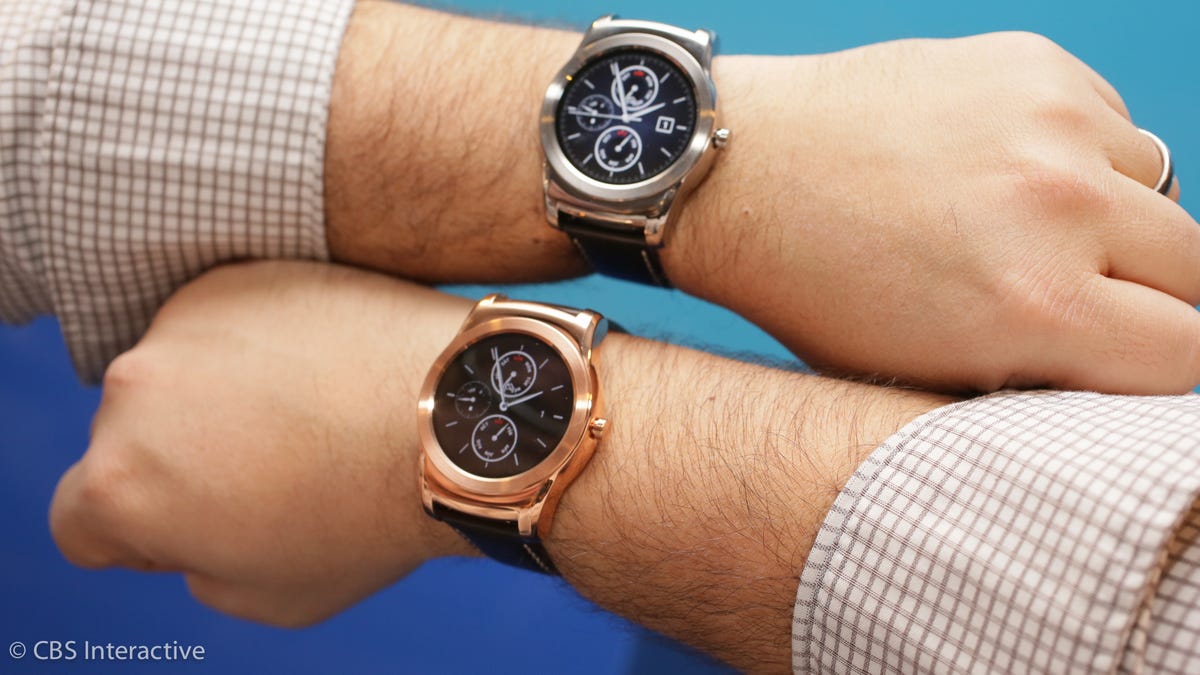
The wearable market is exploding and Mobile World Congress is ground zero. Here are the smartwatches and fitness trackers that have been announced at the annual trade show in Barecelona.
HTC Grip
HTC has partnered with Under Armour for its first wearable device. Rather than releasing a full blown smartwatch, the company opted for a smart fitness tracker. The HTC Grip is capable of tracking steps, distance, calories burned and sleep. While it lacks a heart-rate sensor, there is GPS on board to track distance and pace while running. When paired with either an Android or iOS device, the Grip can receive notifications for calendar events, incoming calls, emails and text messages.
The HTC Grip will be available in the US only this spring for $199.
Huawei TalkBand B2
Huawei hopes to stand out in a crowded wearable market with the TalkBand B2 -- a fitness tracker that can also be used as a Bluetooth earpiece. Your run of the mill features are included -- tracking for steps, distance, calories burned and sleep.
Pricing and availability weren't announced, but the company noted it will likely be around the £120 mark when it goes on sale later this year. That price coverts to about $185 in the US and AU$236 in Australia.
Huawei Watch
Not only did Huawei announces its first smartwatch at the mobile trade show, but it announced the first Android Wear watch with a scratch-proof sapphire crystal display. The Huawei Watch is designed to bring a more classical look to the rather bland smartwatch market. Along with being able to display notifications from your Android smartphone, the watch includes an array of sensors (including a heart-rate monitor on the back) to track your steps, distance and calories burned. It can also automatically detect and track when a user is walking, running, biking, hiking or sleeping.
The stainless steel body surrounds a 1.4-inch circular display that features a 400x400-pixel resolution, which measures to around 286 pixels per inch. The watch will be offered with either a mesh metal strap or leather one. Pricing and release information wasn't announced, although we expect a premium price tag.
LG Watch Urbane LTE
LG resurrected WebOS and ditched Android Wear for its new LG Watch Urbane LTE. The cellular radios let users make phone calls and send messages without being tethered to their smartphone. There's also Wi-Fi for when LTE isn't available and near-filed communications (NFC) on board to take advantage of mobile payments.
Pricing and release information hasn't yet been announced for the LG Watch Urbane LTE.
LG Watch Urbane
LG was also showcasing the luxurious LG Watch Urbane. Unlike its LTE sibling, the traditional Urbane doesn't include cellular capabilities and is powered by Android Wear, rather than WebOS. The watch, along with the Huawei Watch, looks nearly indistinguishable from a regular watch.
The LG Watch Urbane is largely the same as the LG G Watch R. It features a 1.3-inch 320x320 OLED display measured at 245 pixels per inch, and is powered by a 1.2 GHz Snapdragon 400 processor. There's also a heart-rate monitor for workouts and a barometer to measure elevation. As is the case with other Android Wear watches, the Urbane features 4GB of internal storage, 512MB of RAM and is rated IP67 dust and water resistant.
Acer Liquid Leap+
Acer debuted its second-generation Liquid Leap+ smart activity tracker. The device does everything we have come to expect from a fitness tracker. It can track the steps you take, calories burned, distance traveled, active minutes and your sleep at night.
It can even show notifications for things like emails, calendar events and text messages, and lets your control your music playback.
The most appealing thing about the Liquid Leap+ is the price. Availability will initially be limited to Europe, the Middle East and Africa with a starting price of €79. Pricing for other territories wasn't announced, although the price converts to about $89 in the US, £57 in the UK and AU$113 in Australia. That's a relatively low price for an activity tracker that also includes music control and notifications.
Haier Smartwatch
Not everything being shown off at MWC is a smartwatch, at least not in the traditional sense. Designed for parents, family and carers to keep an eye on kids and senior citizens, the Haier connected watch has GPS tracking and SOS calling functions for emergencies. One of the more interesting features, albeit a creepy one, is the watch's listening feature. Haier included a "baby monitor" mode that allows parents to listen in remotely to their children's watch through its built-in microphone. The feature is also present in the senior citizens model, although relabeled as "remote listening" mode.
Haier didn't announce availability, pricing or which regions the watches will be coming to.
Pebble Time Steel
Pebble announced its new Pebble Time smartwatch a few days before the start of MWC. The watch went on to break records on the crowdfunding website Kickstarter, raising more than $13 million in under a week. Now there's also the Pebble Time Steel, a metal version of the company's new smartwatch.
The Pebble Time Steel cost $100 more than the original Pebble Time. That price increase gets you a more premium design and two watch bands -- a leather one and a metal one that match the color of your watch.
The Pebble Time Steel can be pre-ordered on Kickstarter starting at $250 (about AU$320 or £165). That price will increase to $299 (AU$380 or £195) when the watch is available in stores this July.
This slideshow will be updated throughout the week as more devices are announced. In the meantime, don't miss any of our Mobile World Congress coverage. You can follow along with CNET right here.


